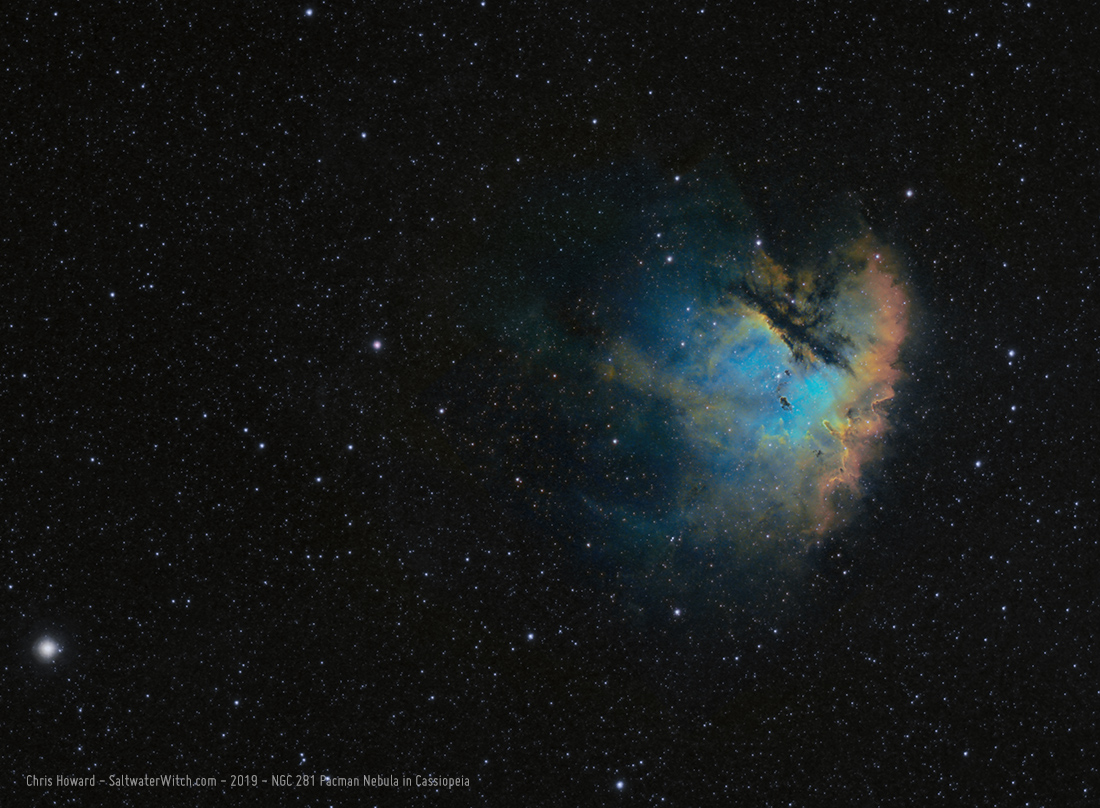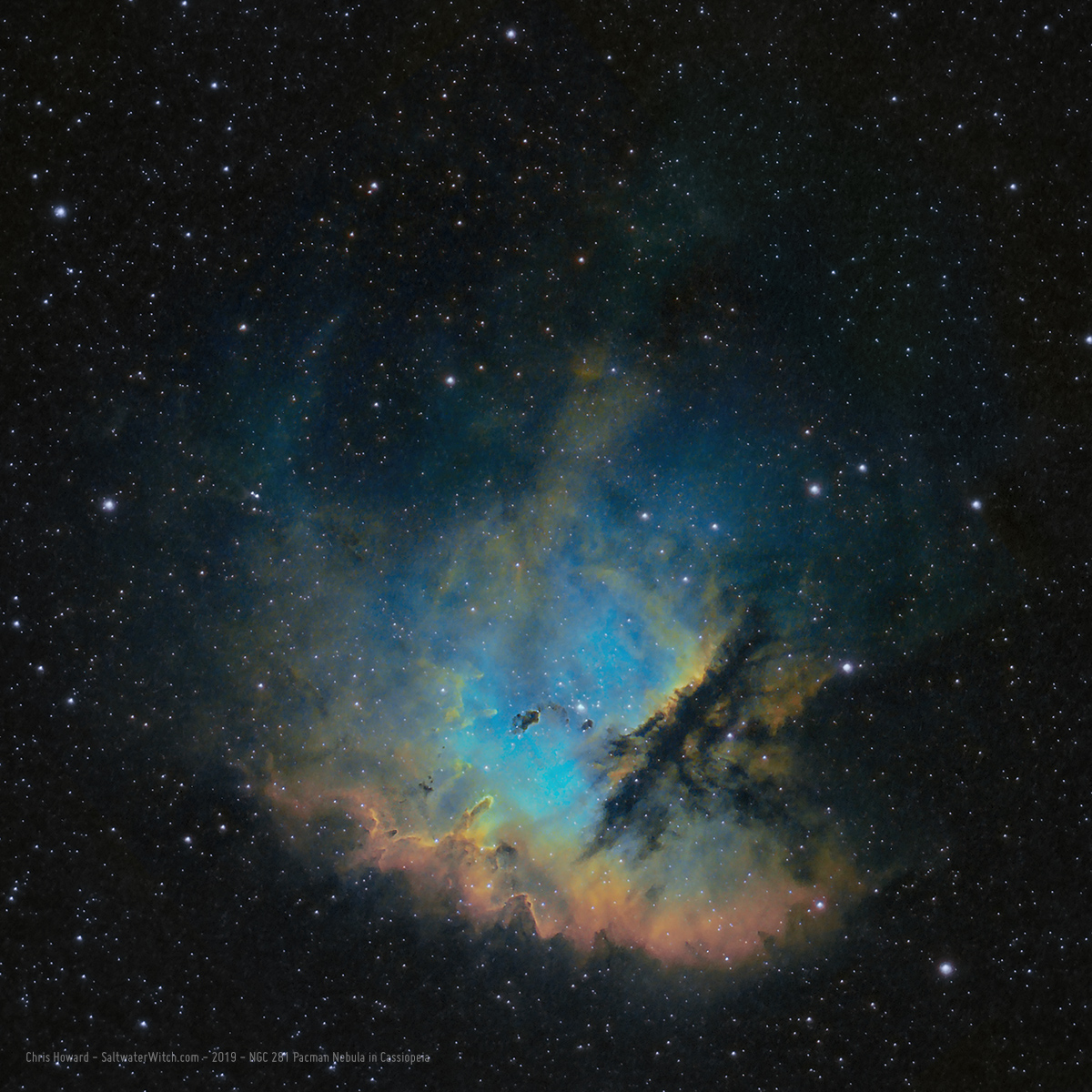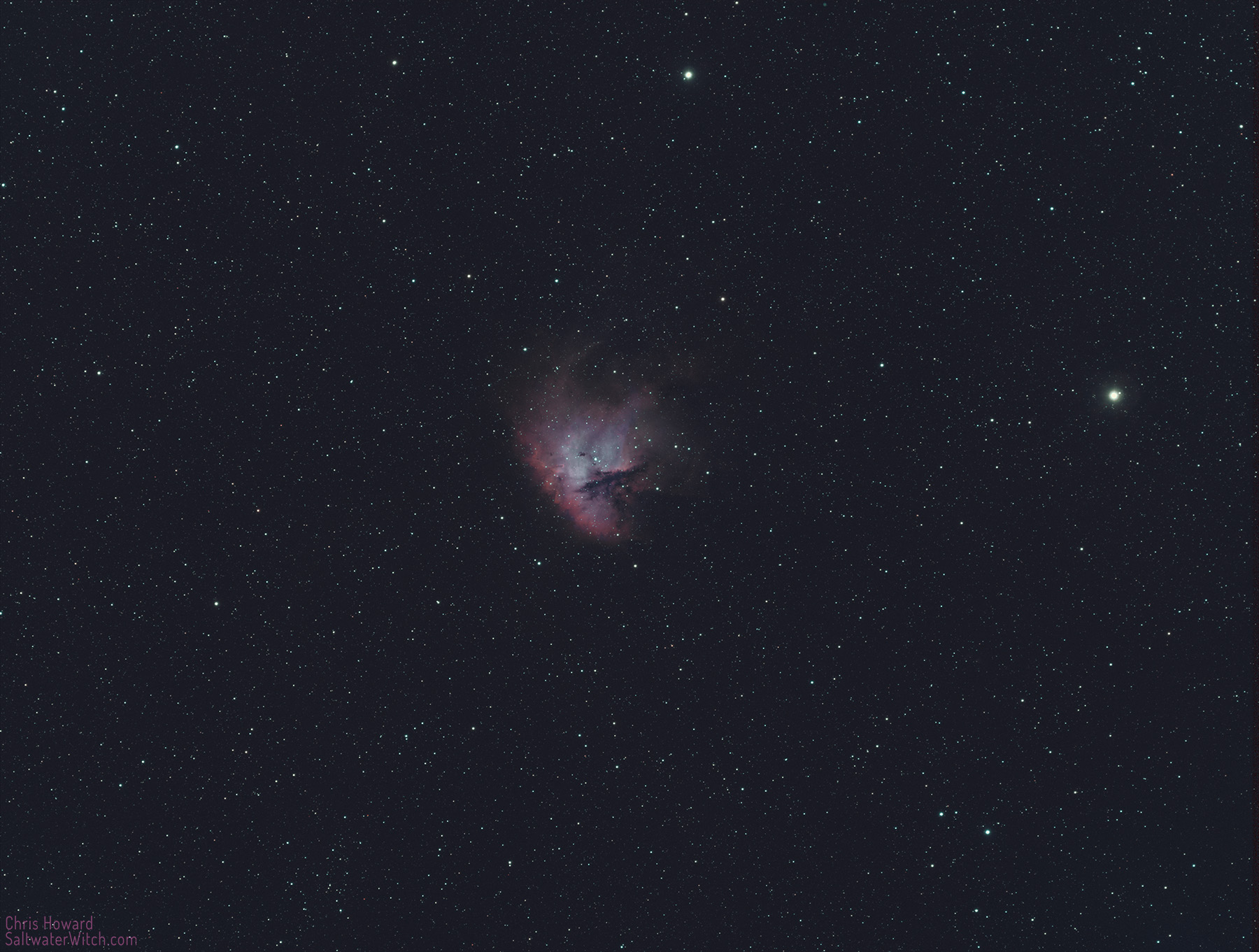Pacman
A wide-field view of the Pacman Nebula (NGC 281, IC11, Sh20184) in Cassiopeia (Ha + OIII), about 9500 lightyears away. The massive star on the right is α Cassiopeiae (or "alpha Cass" if you're on friendly terms) which makes up the right lower point of the W asterism of the constellation Cassiopeia. The bright star at the top is eta Cass, a binary star system that's only about 20 lightyears away from us, downright neighborly, and is not part of the W asterism.
Posted September 4, 2022
Try out the new pier with some imaging
The weather has not been cooperative but I have set up the SkyWatcher EQ6-R Pro on the new backyard pier, along with the William Optics GT81 and my narrowband imaging train. I'm using the latest (v1.54) Stellarmate for these tests, but not in Stellarmate mode (not using the app). I'm remoting into the machine, running on a Raspberry Pi 4 4GB board with 128GB, and just running KStars/Ekos there. I used the QHY Polemaster on the Mate to polar align, and that was easy. My one imaging test so far with NGC 281 (Sh2-184) the Pacman Nebula in Hydrogen-alpha worked well enough with 7 240-second Ha subs stacked in DSS and processed in Photoshop 2021. No calibration frames. There wasn't time before the clouds drifted in. My next test is to use SharpCap Pro's Polar Alignment functions, and see where that gets me.
Some shots from the the night of November 7:



Posted November 9, 2020
NGC 281 Pacman Nebula
NGC 281 Pacman Nebula - I'm finally getting around to processing a bunch of data I gathered over the last month and a half. Pacman is one my favorite nebulae in Cassiopeia. I love that it's out on its own, surrounded by cold dark space and a field of stars. NGC 281 also has an impressive set of Bok Globules, those dark gaseous knots drifting in front of the bright blue and gold (oxygen and hydrogen). And that's Achird (eta Cassiopeia) at the bottom left, a variable double star a little under 20 lightyears away. Damn, that's nearly close enough to visit--with the right technology.

Another one of the Pacman Nebula NGC 281, with narrowband data I started taking in early June. You can really see the Bok globules, those little lumps of dark dust and gas standing out near the center and backlit by the bright emission of the Pacman. https://en.wikipedia.org/wiki/Bok_globule
Imaging notes: William Optics GT81 at f/4.7 with WO 0.8x Flat6A II, Astronomik Ha, OIII, and SII filters, Moonlite focuser, ZWO ASI120MM OAG, Imaging camera: ZWO ASI1600MM Pro cooled mono on an iOptron CEM25P mount. Stacked in DSS, processed in PS CC 2019.


